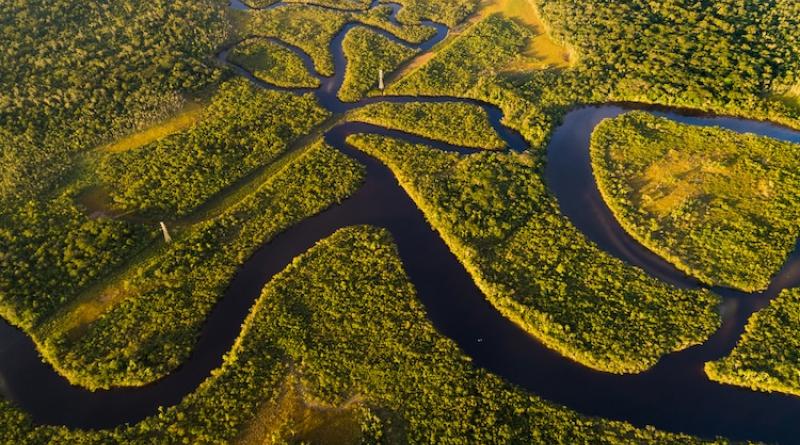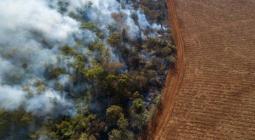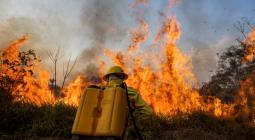Young leaders have the power to protect the Amazon. Here’s how

Preserving and protecting the Amazon rainforest is absolutely essential for the fight against climate change. To do this, Amazonian leaders must be listened to. The voices of the Amazon’s indigenous communities must be centered.
Developing Amazonian representation enhances our collective capacity to address climate change by tapping into indigenous knowledge and sustainable practices cultivated over generations. Involving these communities in decision-making not only ensures the development of more effective climate policies but also contributes to the survival and perpetuation of the Amazonian cultural richness.
Fostering Amazonian representativeness is also a crucial component in the fight against climate change, aligning environmental preservation with the empowerment of those safeguarding these vital ecosystems.
Already, young leaders are emerging. The Gualinga sisters and Maickson Serrão, for example, have been at the forefront of championing their cause and bringing the voice of Amazonians to global platforms. These young change-makers are not only leveraging their digital presence to advocate for climate engagement and action, but are raising awareness about the need to enhance Amazonian representation at decision-making tables. This sentiment is succinctly captured in a common refrain: “Nothing about us without us.”
Eco-entrepreneurship for a more sustainable Amazon
Eco-entrepreneurship is a compelling way to foster a more sustainable future, and youth leadership can play a pivotal role in propelling this transformative movement forward. In an era marked by environmental challenges, environmentally conscious businesses can achieve not only financial success but also deliver a positive ecological and social impact.
By embracing eco-entrepreneurship, Amazonian youth leaders can drive economic growth and contribute to a more sustainable and resilient global ecosystem. Take, for example, Doce Amazônico, an eco-conscious food brand spearheaded by women, dedicated to crafting traditional candies infused with chestnuts, coconuts and cupuaçu. Their product line includes delicacies and sweets composed of items found in the Amazon forest, exemplifying the fusion of local expertise, sustainability and delicious flavours.
Tourism, too — if done right — can be an asset to the Amazon and its people. Ecotourism has emerged as a transformative business model for communities in the Amazon. With the introduction of training and capacity-building programmes by local organizations, families are becoming guardians of the forest. They make a livelihood by showcasing the Amazon’s beauty and richness to global tourists. Examples include the Garrido Guesthouse in the riverside community of Tumbira, and the Caboclo’s House in Acajatuba. Both have turned Amazonian natural beauty into socially positive eco-tourism.
The Amazon holds vast potential for economic and environmental progress through diverse products and services that protect the forest and its people.
Latin American cooperation for development of the Amazon
The Amazon spreads across eight countries. Achieving sustainable development in this vital area necessitates collaborative efforts from all Amazonian nations that share it. This involves establishing new trade routes, employing advanced technologies for monitoring and safeguarding, advocating for democracy and resisting authoritarianism. Essential to this approach is fostering an environment that facilitates streamlined knowledge-sharing among these nations. The prosperity of the Amazon and its inhabitants relies on the comprehensive commitment of all countries involved.
Models that exemplify the kind of collaboration required are readily available to draw upon. Regreening the Dry Corridor in Central America, led by World Vision, is a critical initiative aimed at addressing the environmental vulnerabilities of El Salvador, Guatemala, Honduras and Nicaragua. This Latin American initiative focuses on enhancing food security, agricultural production, and water safety and quality in the Dry Corridor. To achieve these goals, the initiative promotes sustainable agricultural practices, climate-smart farming techniques and efficient water resource management. Countries in the region can collaborate to share expertise, resources and best practices, fostering a unified approach to environmental sustainability and climate resilience in the Dry Corridor. Applying this model to the Amazon could reap dividends for generations to come — and youth leadership could play a key role.
Youth leadership and the future of the Amazon
Youth leadership assumes a crucial role in fostering Latin American cooperation for the integral development of the Amazon. Amid complex environmental and social challenges, the dynamism, innovation and passion of young leaders are vital assets. Uniquely positioned to bridge diverse communities and drive collaborative initiatives, they can contribute to sustainable solutions prioritizing environmental conservation, indigenous rights, and the well-being of Amazonian communities. Members of the World Economic Forum’s Global Shapers Community are doing just that.
In early September 2022, the Global Shapers’ Manaus Hub organized Shape LATAM, convening over 150 participants from 12 countries to explore the theme "What is your Amazon?"
Unfolding in the heart of the Brazilian rainforest, the event emphasized the role of younger generations in climate leadership, and the importance of often-overlooked local and ancestral communities. They examined the role of eco-entrepreneurship in reshaping the economy and livelihoods of Amazon communities, with participants witnessing sustainable initiatives led by the Indigenous ribeirinhos. These efforts, including ecotourism and forest-based products, not only provided sustainable livelihoods but also contributed to the well-being of families and communities.
The dynamism, innovation and passion of young leaders intersect with the vibrant cultures and biodiversity of the Amazon. It is evident that the youth’s collective efforts hold the key to preserving this crucial region. Through advocacy, digital engagement and on-the-ground initiatives, youth leaders mobilize resources, raise awareness and contribute to a collective, environmentally sustainable, and socially inclusive future for the Amazon region.
Young leaders are the architects of a future where the Amazon not only endures but thrives. Their passion and commitment to these causes already resonate far and wide — now we must listen.





